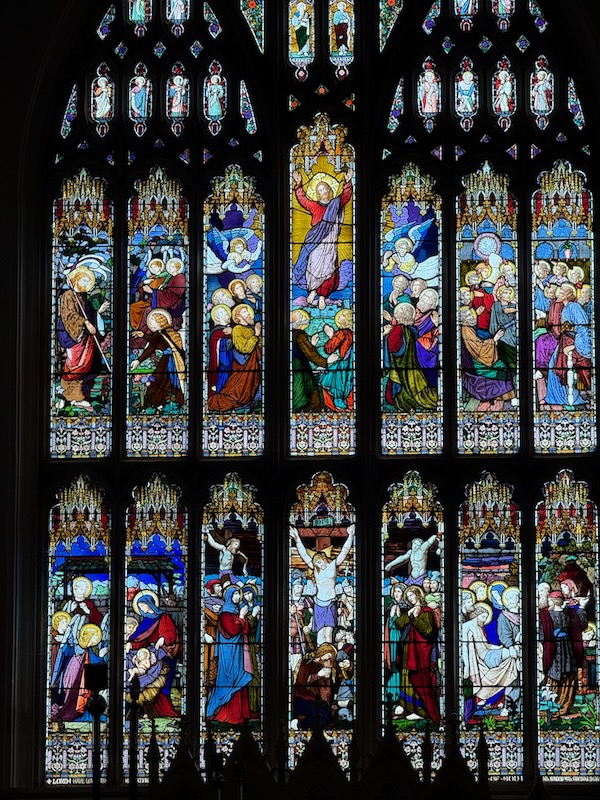Our Blog - August 2025 - England trip - Horsham
The market town of Horsham has a very long history, first mentioned in King Eadred's land charter of AD 947. The town had connections to the sale of horses and recent ideas suggest the name might be derived from "Horse Ham", a settlement where horses were kept. Despite having been in existence for some 140 years at the time of the survey, Horsham is not mentioned in the Domesday Book. I had mentioned in my short Domesday Book blog, we know that there are lots of towns that were not included for one of a several reasons. Perhaps it was never visited by inspectors, or was simply 'left out' of the final version. Visits by King Edward I, King Edward II, King Henry VII, and King Henry VIII all show how important Horsham was.
We started with some Lucy-time in Horsham Park. In around 1800, much of what is now the park was sold to Robert Hurst, a member of Parliament, who died in 1843. While his son fled the country to escape creditors in 1845, his grandson had quite a bit of influence in the town until his death in 1905. Horsham Park house and grounds were then sold to the town council and, with a few other parcels of land that were purchased, the park was created. It was a huge park and dogs just need to be "under control", so most of the dogs we saw were not on a leash. So we were able to do a bunch of playing with Lucy.
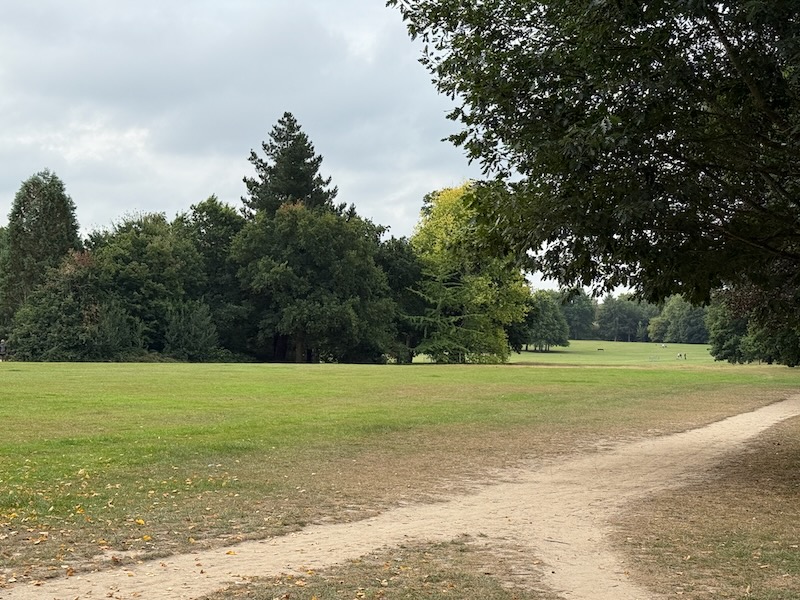
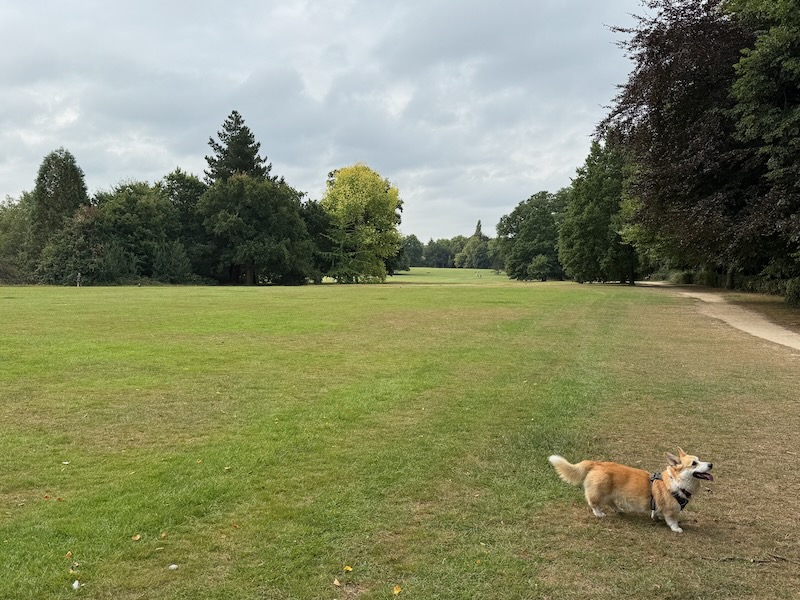
Park House dates from 1720. The house was sold to the local council in 1928 to use as their offices and then turned into a wedding venue when the council moved to another location. . There is a sundial, entitled "Sungod", in front of the House.
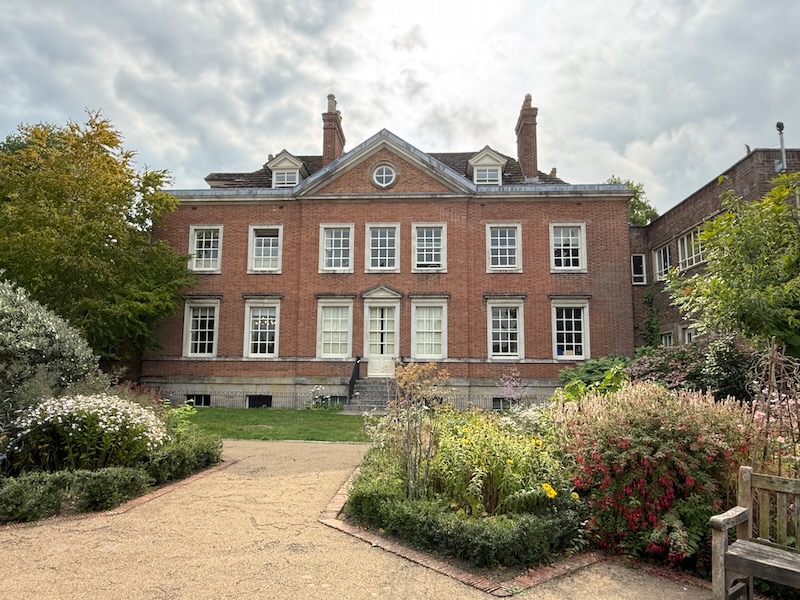
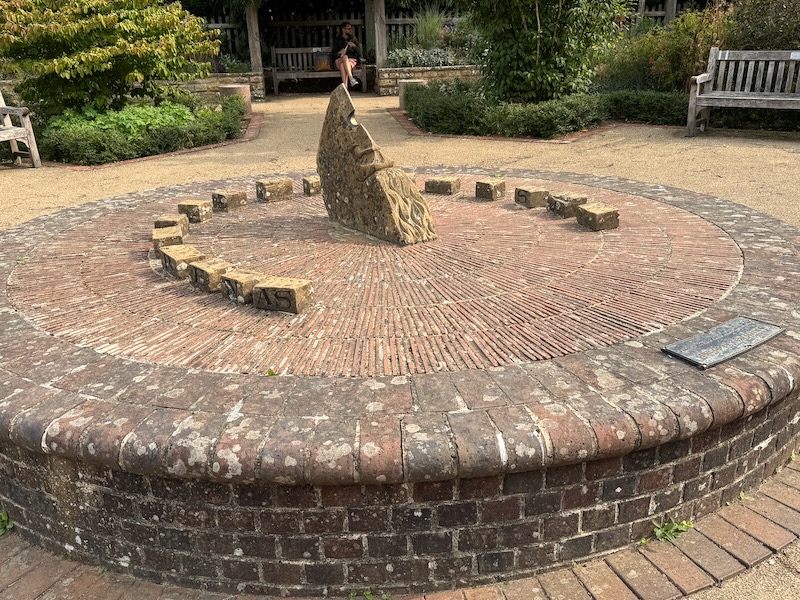
One of the great things about England that we have found is how puppy-friendly many places are. We spend LOTS of time in pubs because they are almost all puppy-friendly. Many pubs and coffee shops have a "doggy bar", complimentary puppy-treats and sometimes multiple dog bowls and water.
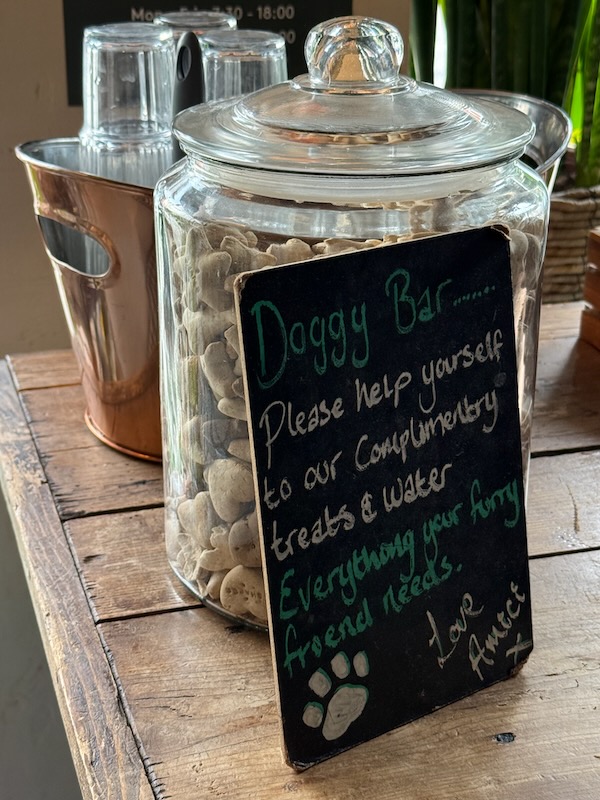
The Town Hall in Market Square dates back to around 1648 when it was referred to as a 'Market House'. In 1721, a new building was built to contain the poultry and butter market, and the building fell into disrepair. It was rebuilt around 1812 and again in 1888 when it became the property of Horsham Urban District Council. It now houses a restaurant chain on the ground floor, but thankfully, they haven't changed the building.

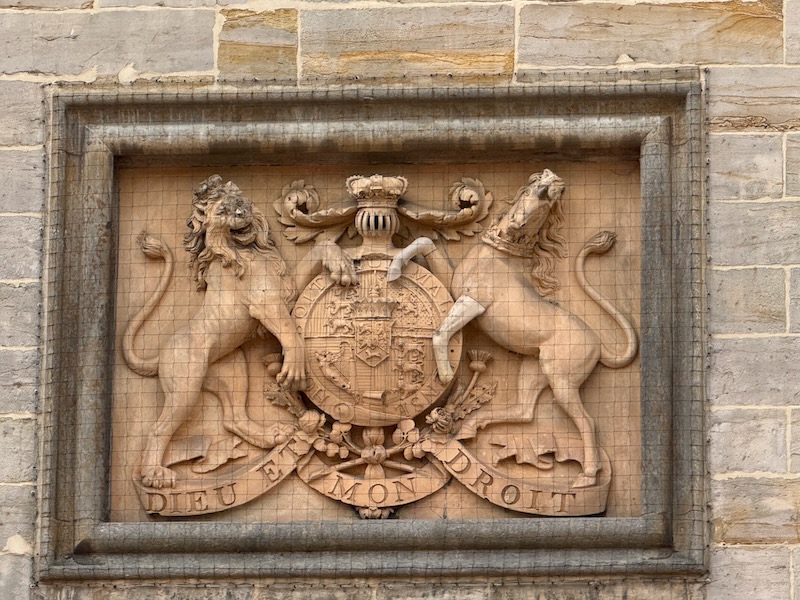
This building is the Anchor Hotel. An inn was first recorded on the site in 1611, but it was rebuilt in 1899, with the date carved in stone across the front.
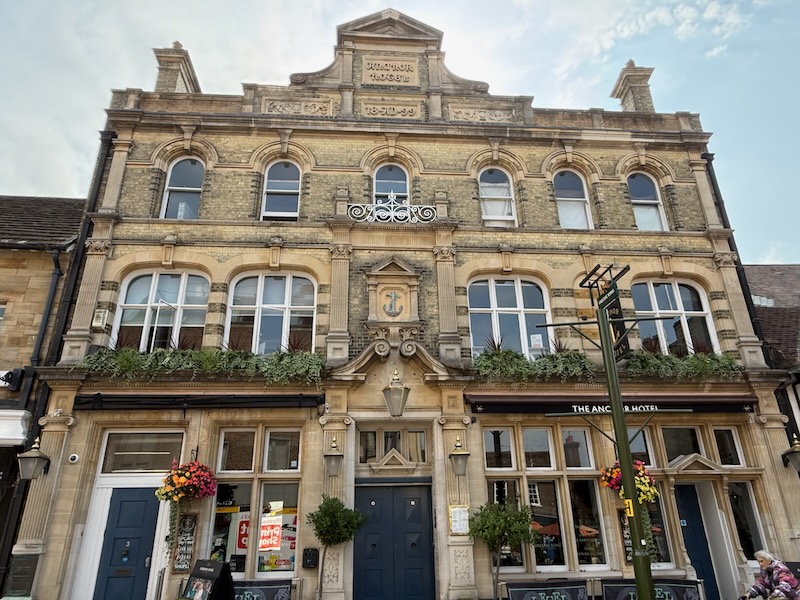
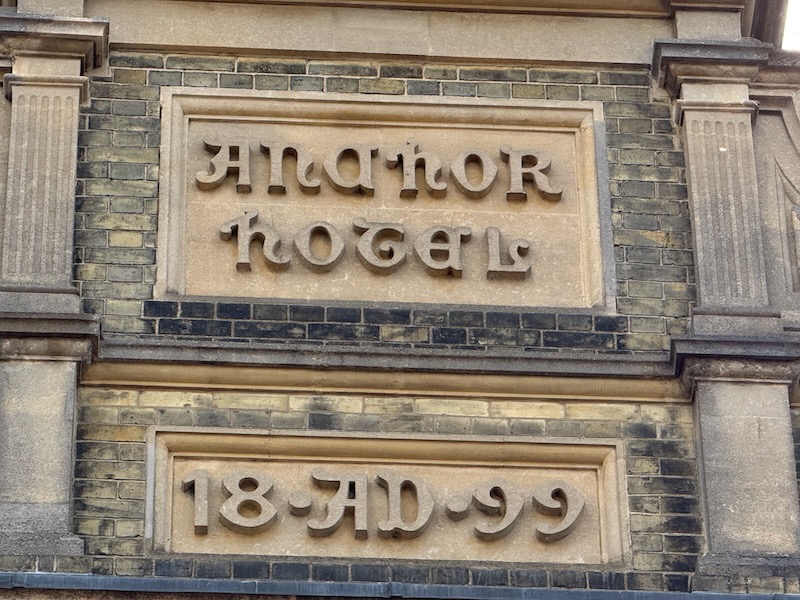
St Mary's Church is a combination of several construction timeframes. The west end and the base of the tower belong to a late 12th-century church (although the date for the top of the tower is in question) and most of the rest is 13th-century. In the 2nd picture, you can clearly see a difference in the construction materials between the short square part (rectangular blocks) and the mishmash of shapes on the main body of the church.
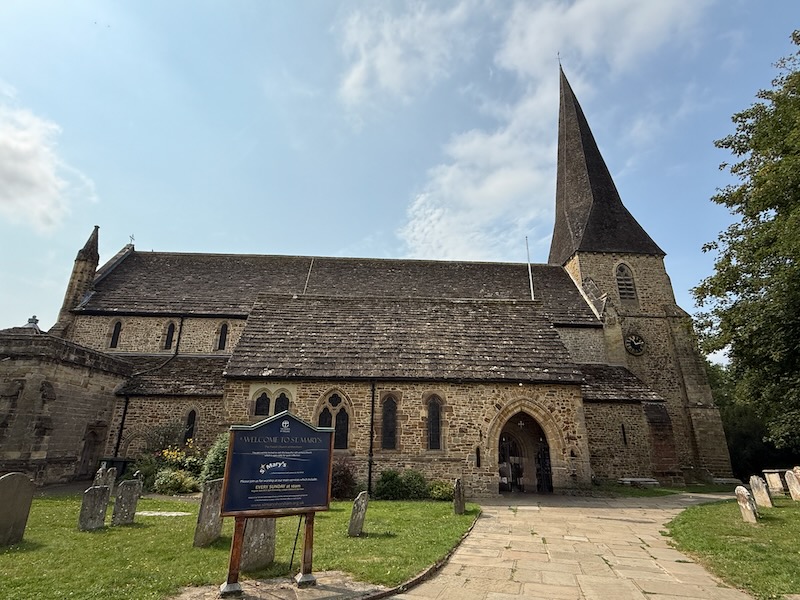
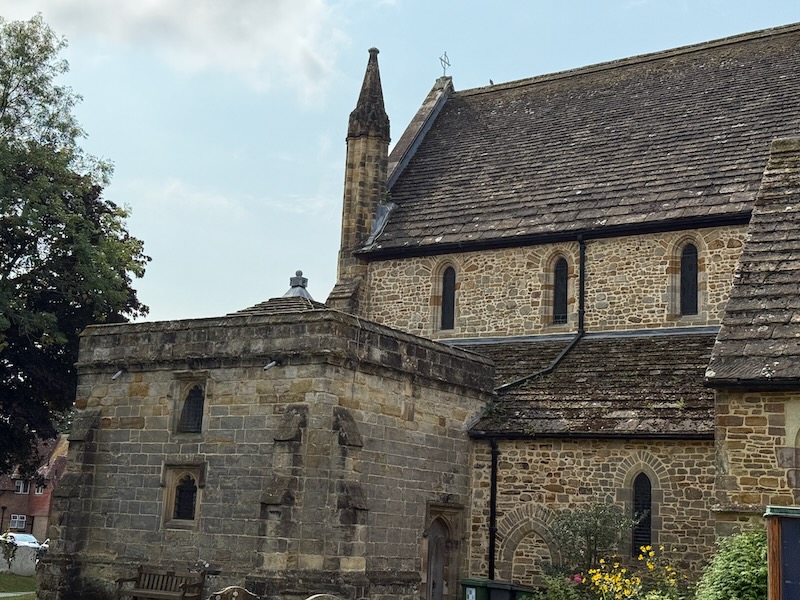
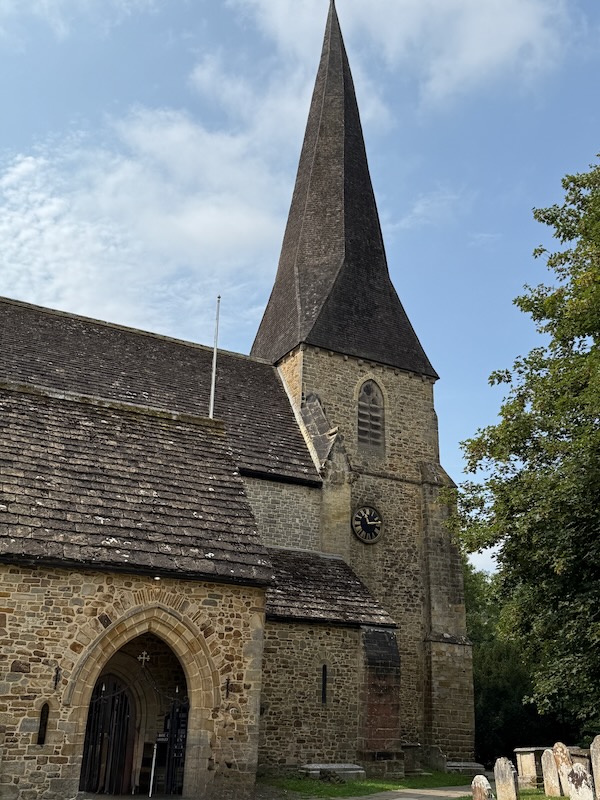
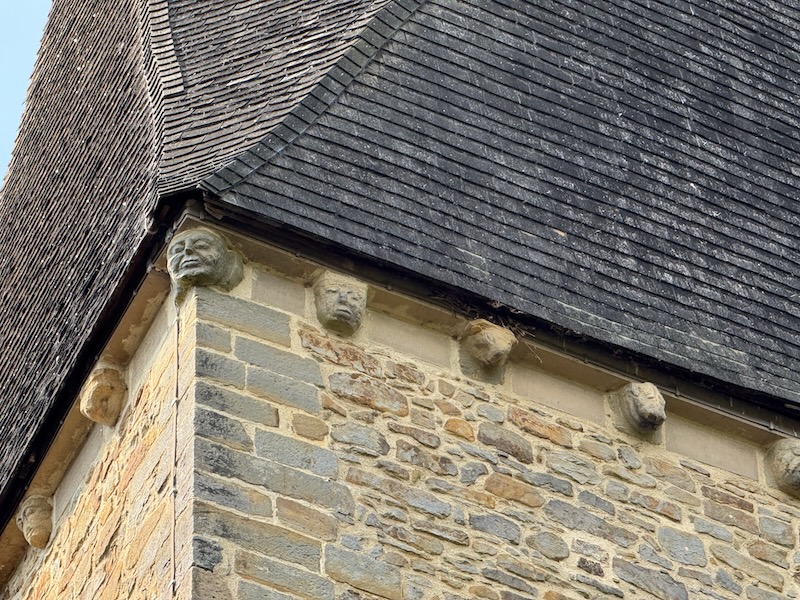
The octagonal font was made in the 15-century out of Sussex marble. It was originally located under the bell tower but moved to the nave in 1954.
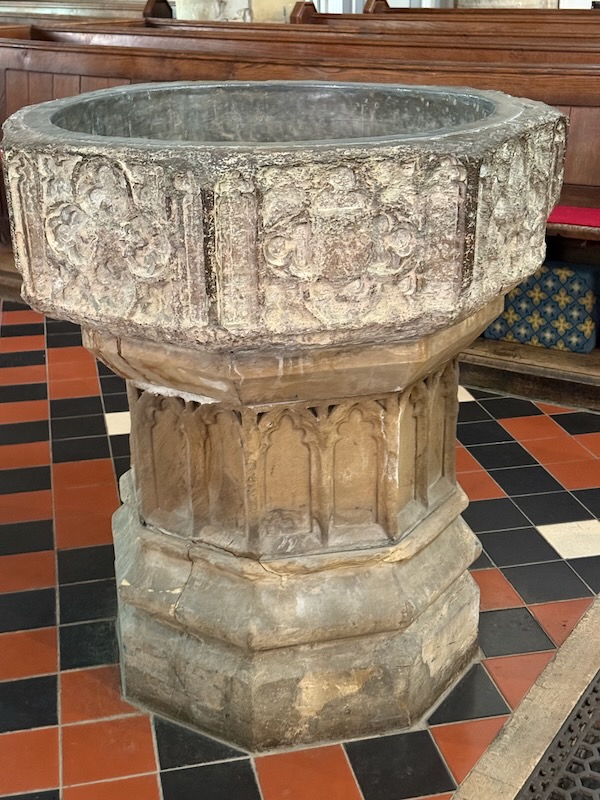
Looking down the nave, you can see the Gothic arches that separate the nave from the side aisles. The church has a wagon-style wooden ceiling that is quite tall, allowing for the tall stained-glass window at the end. If you look closer at the ceiling, you can see that the support beams and internal structure beams are painted. While the exact date of the ceiling isn't known, it goes back before the 15th-century.
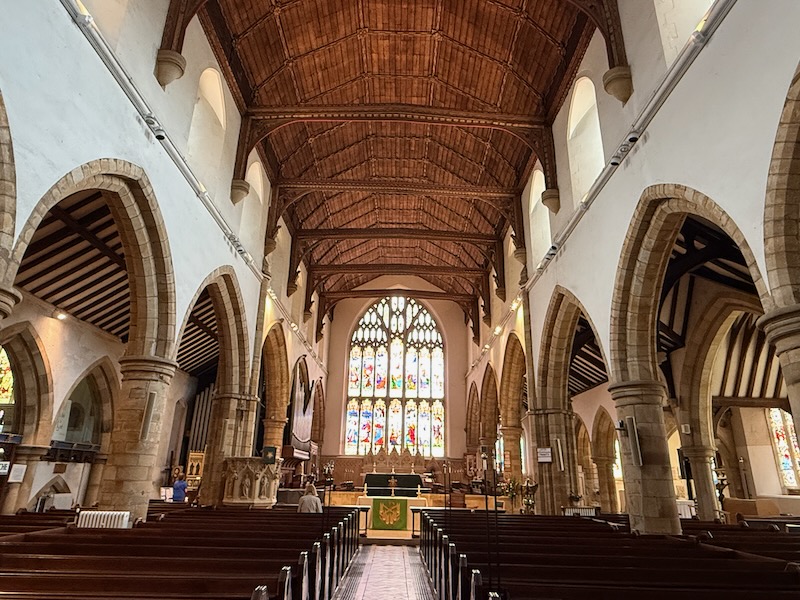
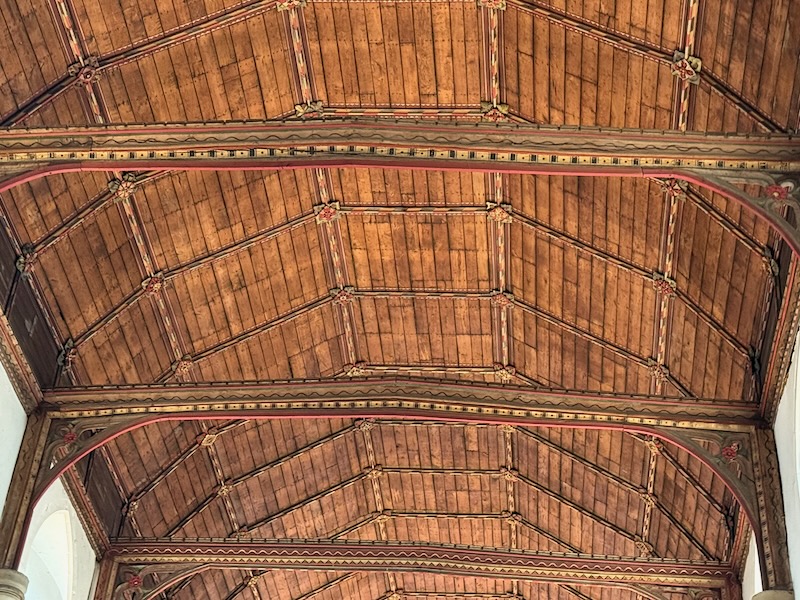
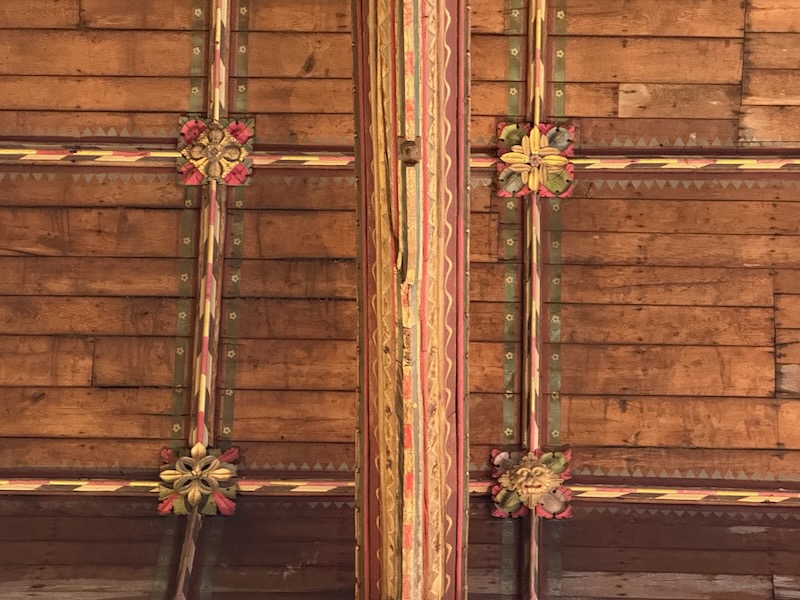
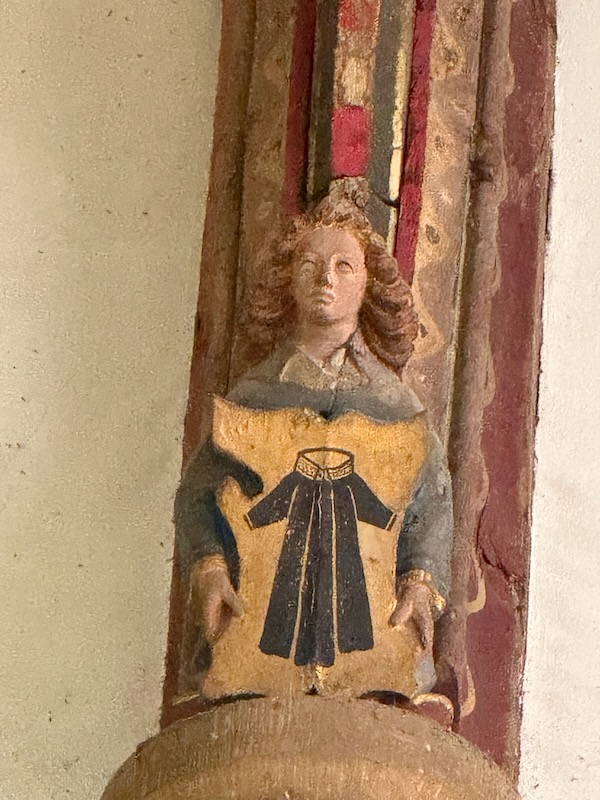
A closer look at the large window, this one was installed in 1865, based on an earlier 15th-century window that was destroyed by a hurricane. The upper lancet windows show Christ appearing to Mary Magdalene at Easter, the Ascension, Pentecost, and the descent of the Holy Spirit. The lower lancet windows show the Nativity, the Crucifixion, and the Entombment.
